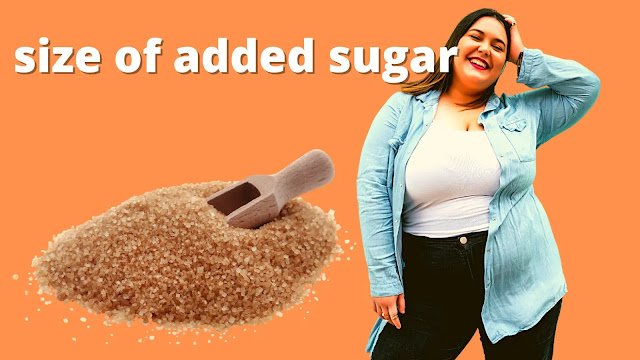What to Know About Sugar? Pros and Cons
Sugar is a sweetener that provides calories added to foods and or beverages to give the food or drink a sweet taste and texture. Sugar is sometimes also known as a calorie sweetener and is a simple carbohydrate that the body uses as fuel. Also worth knowing is that sugar has no other nutritional value.
What is the difference between "natural sugar" and "added sugar"?
Natural sugars are sugars found in whole, unprocessed foods, such as milk, fruits, vegetables and some grains. The most common natural sugars are fructose, found in fruits, and lactose, which is found in dairy products.
Added sugar is added to processed foods and/or drinks while they are being made, such as sugar you can add to your food at home; another example is adding sugar to tea or coffee. In food factories, for example, you can find two types of sugar, namely natural sugars (such as fructose) and refined sugars (such as high-fructose corn syrup), for the food and beverages they produce.
Why is sugar added to food and drink?
Although added sugar provides no nutritional value, it does provide many uses in food processing. The purpose of the addition is to:
- As a preservative for jellies and jams
- Produce big size on ice cream
- Assists in the fermentation of bread and alcohol
- Preserves the freshness of baked goods
Sugar is also added to food and drinks to make the food taste or drink more delicious and savoury.
The importance of limiting added sugar if you are on a diet
There are harmful effects or consequences for health due to excessive sugar consumption. Excessive sugar consumption when on a diet can cause tooth decay, obesity, difficulty controlling type 2 diabetes, higher triglyceride levels, lack of good fats (high-density lipoprotein-HDL-good cholesterol), and heart disease.
And if you fill in foods or drinks that contain added sugar, you may lack the consumption of healthy foods and drinks that function to maintain a healthy body. For example, research shows that people drink more sugary drinks (such as soda or juice drinks) with less milk. Milk provides calcium, protein and vitamins that help the body function properly.
What is the ideal size of added sugar?
Each individual needs a certain number of calories each day to provide energy. You should try to meet most of your daily caloric needs by eating healthy foods that are low or no sugar that provides the body with essential nutrients. Suppose you are a very physically active person daily, such as being active in sports or choosing healthy foods to meet most of your caloric needs. In that case, you may have a few extra (known as discretionary) calories left over. This means that you may need some extra or extra calories to spare.
Nowadays, obesity and heart disease cases tend to increase; the Organization of Heart Disease Associations in the United States issued guidelines for the consumption of added sugar. They recommend that no more than half of the extra (discretionary) calories come from added sugar. For women, this means no more than six teaspoons of added sugar a day (about 100 calories), the same amount of sugar in a cup serving of ice cream or less than a 12-ounce can of non-diet soda. Men should consume no more than nine teaspoons of added sugar a day (about 155 calories); the same amount of sugar is 16 ounces of mocha coffee or 12-ounce cans of non-diet soda.
Sugar has many names.
The following are the names of the sugars that are usually listed on the content label. Check the ingredients on food labels for the following sugars: Brown sugar, cane juice-cane sugar, cane syrup, Confectioners' sugar, Corn sugar, Corn syrup, Dextrose, Fructose, Fruit juice concentrate, Glucose, white granulated sugar, High fructose corn syrup, Honey, Invert sugar, Lactose, Maltose, Malt syrup, Molasses, Raw Sugar- Raw sugar, Sucrose, Syrup.
How to find out how much sugar is in a food or drink
To find out, usually, when you buy food or drinks, check the Nutrition content label on the food or drink. However, sometimes there are food manufacturers who do not separate the added sugar on the food content description label. However, you can see how much total sugar is in each serving. You can also check which lists the ingredients in order of weight.
The nutrition content on the label says 40 grams of sugar per serving. What does it mean?
The information listed on the nutritional content label can be astounding. When reading the info for sugar in each serving, keep these two nutrition tips in mind:
- 4 grams of sugar equals one teaspoon of sugar
- 1 gram of sugar equals four calories
Using the two tips above, you can deduce the information on nutrition labels in foods and understand what it means. A portion of food or drink containing 40 grams of sugar per serving equals ten teaspoons of sugar and 160 calories.
Related Topics"pros and cons of sugar balance""pros and cons of sugar waxing""pros and cons of sugar gliders""pros and cons of sugar tax""pros and cons of sugar busters diet""pros and cons of sugar daddy""pros and cons of sugar maple trees""pros and cons of sugar substitutes""pros and cons of sugar scrubs""pros and cons of sugarcane juice"
Tips for avoiding excessive added sugar in the diet
To avoid excess sugar, you must know the foods and drinks with the highest sugar content. For example, sugary drinks, including soft drinks, sports drinks and fruit juice drinks, are the number 1 source of drinks with the highest added sugar. A 12-ounce can of non-diet soda contains eight or more teaspoons of sugar and have more than 130 calories. According to the American Heart Association recommendations, this is a measure or excessive amount of added sugar for women.
In addition, the following are things we can do to limit the consumption of added sugar in foods or beverages:
- Limit or reduce sweets, sugary foods or drinks and oven-baked foods.
- Choose heart-healthy foods, such as fruits, vegetables, lean protein and whole grains for meals and snacks.
- Skip or avoid sugary drinks and opt for mineral water instead.
Reduce or avoid processed foods, which are generally high in sugar and fat and sodium.
When baking a food, use a less sugar recipe to use safe and healthy substitutes for your recipes. You can also use unsweetened applesauce, substitute sugar or reduce the amount of sugar in your recipes.
Conclusion
Our body needs sugar, but it will be bad for your body if you consume it in excess. Avoid soft drinks or reduce the amount of intake; it is better. If the body wants sugar, choose natural sugar from fruits found anywhere.








